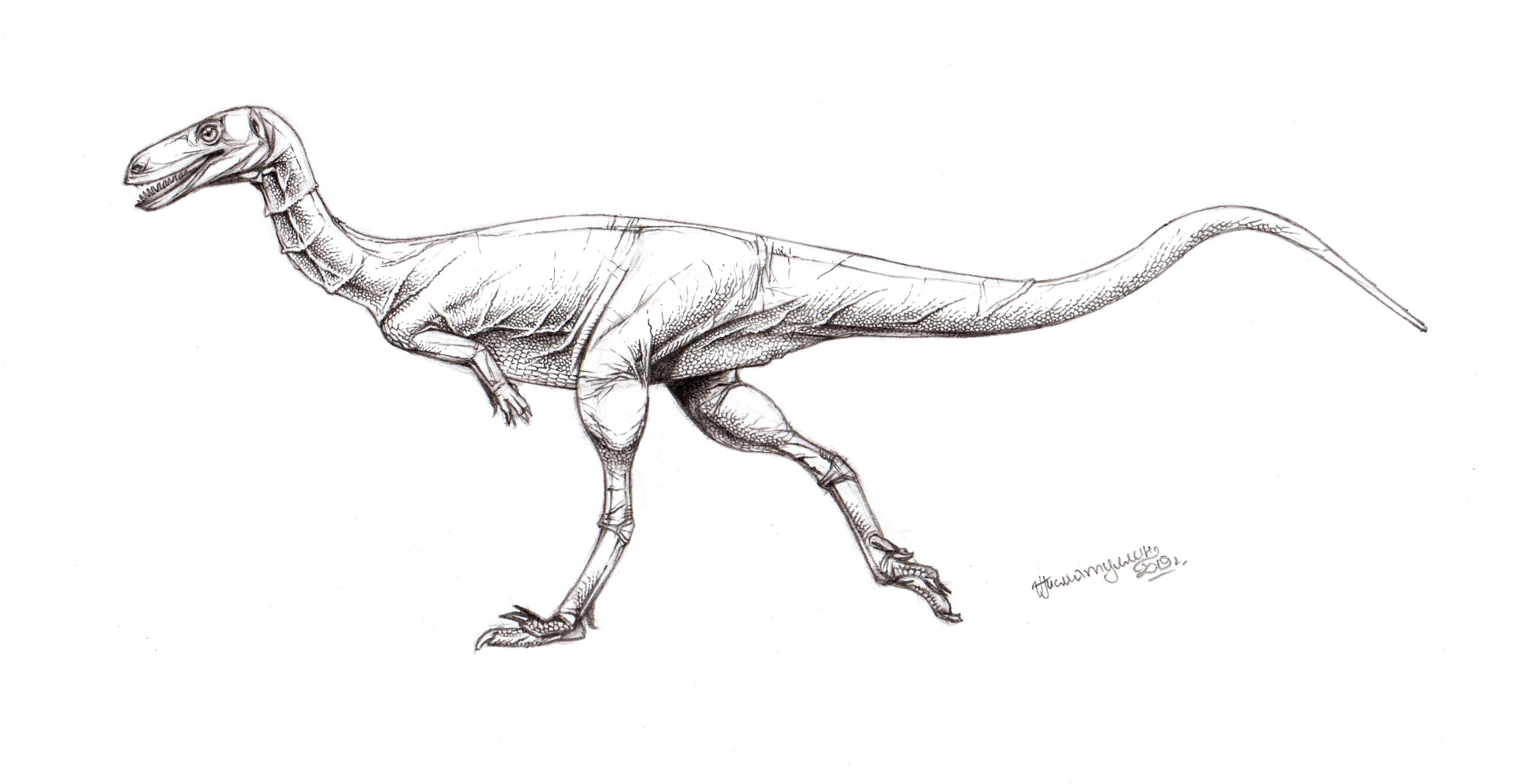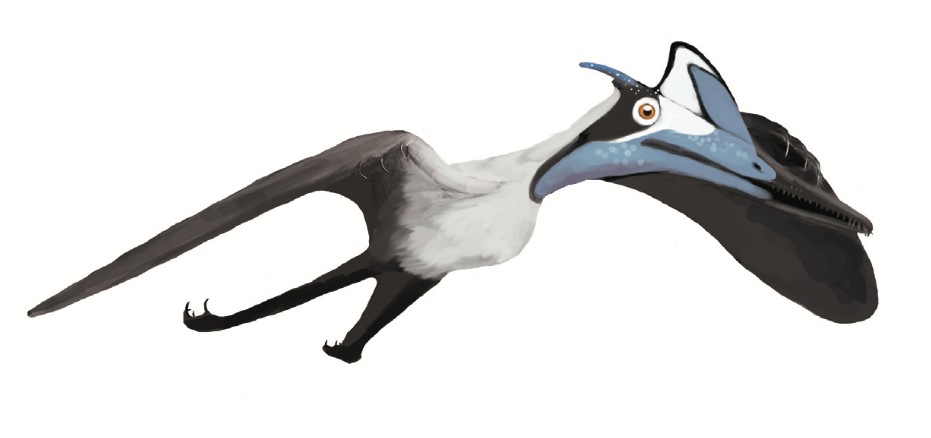|
Keresdrakon
''Keresdrakon'' is an extinct genus of azhdarchoid pterosaur from the Goio-Erê Formation of Brazil, which dates back to the Early Cretaceous period (Aptian-Albian stages), 125 to 100.5 million years ago. ''Keresdrakon'' contains a single species, ''Keresdrakon vilsoni''. Discovery In 1971, Alexandre Dobruski and his son João Gustavo Dobruski, discovered a fossil site near Cruzeiro do Oeste in Paraná. Only in 2011, paleontologists Paulo César Manzig and Luiz C. Weinschütz visited the location. A bone bed proved to be present with hundreds of specimens of a pterosaur that in 2014 was named '' Caiuajara''. Among them were some bones belonging to a second pterosaur species. These remains, both of ''Caiuajara'' and the new taxon, were prepared by volunteer Vilson Greinert. In 2019, the type species ''Keresdrakon vilsoni'' was named and described by Alexander Wilhelm Armin Kellner, Luiz Carlos Weinschütz, Borja Holgado, Renan Alfredo Machado Bantim and Juliana Manso Sayão. ... [...More Info...] [...Related Items...] OR: [Wikipedia] [Google] [Baidu] |
Goio-Erê Formation
The Goio-Erê Formation is a geological formation in Brazil. It is sometimes thought to be deposited between the Turonian and Campanian stages of the Late Cretaceous, but an Aptian-Albian date has also been proposed. It primarily consists of sandstone and was deposited in a desert environment. It is known for its exceptional 3-D preservation of fossils at the Cemitério dos Pterossauros ("Pterosaur Graveyard") Quarry, located in the municipality of Cruzeiro do Oeste. Animals recovered from this site include the pterosaurs ''Keresdrakon'', ''Caiuajara and Torukjara'', the dinosaurs ''Berthasaura'' and ''Vespersaurus'', and the Iguanomorpha, iguanian lizard ''Gueragama.'' A few studies have alternatively assigned the Cemitério dos Pterossauros site to the younger Rio Paraná Formation, however. Fossil content Dinosaurs Pterosaurs Squamates References Geologic formations of Brazil Upper Cretaceous Series of South America Cretaceous Brazil Campanian Stage Coniaci ... [...More Info...] [...Related Items...] OR: [Wikipedia] [Google] [Baidu] |
Azhdarchoidea
Azhdarchoidea ( , meaning "azhdarchid-like forms") is a group of pterosaurs within the suborder Pterodactyloidea. Pterosaurs belonging to this group lived throughout the Early and Late Cretaceous periods, with one tentative member, '' Tendaguripterus'', that lived in the Late Jurassic period. Remains of this group have been found in the Americas, Africa, and Eurasia, suggesting that they probably had a global distribution. Azhdarchoids are generally distinguished from other pterodactyloids by their relatively low arm-to-leg-length ratio, suggesting that they were more proficient in moving on the ground than pterosaurs like ''Pteranodon'' or '' Anhanguera'' (which had very long arms relative to the length of their legs). This has led some researchers to suggest that many azhdarchoids, such as the azhdarchids and dsungaripterids, may have been primarily terrestrial, while retaining the ability to fly when necessary. Classification Azhdarchoidea was named by paleontologist David ... [...More Info...] [...Related Items...] OR: [Wikipedia] [Google] [Baidu] |
Azhdarchoid
Azhdarchoidea (International Phonetic Alphabet, , meaning "azhdarchid-like forms") is a group of pterosaurs within the suborder Pterodactyloidea. Pterosaurs belonging to this group lived throughout the Early Cretaceous, Early and Late Cretaceous periods, with one tentative member, ''Tendaguripterus'', that lived in the Late Jurassic period. Remains of this group have been found in the Americas, Africa, and Eurasia, suggesting that they probably had a global distribution. Azhdarchoids are generally distinguished from other pterodactyloids by their relatively low arm-to-leg-length ratio, suggesting that they were more proficient in moving on the ground than pterosaurs like ''Pteranodon'' or ''Anhanguera (pterosaur), Anhanguera'' (which had very long arms relative to the length of their legs). This has led some researchers to suggest that many azhdarchoids, such as the azhdarchids and dsungaripterids, may have been primarily terrestrial, while retaining the ability to fly when nece ... [...More Info...] [...Related Items...] OR: [Wikipedia] [Google] [Baidu] |
Alexander Kellner
Alexander Wilhelm Armin Kellner (born September 26, 1961) is a Brazilian geologist and paleontologist who is a leading expert in the field of studying pterosaurs. His research has focused mainly on fossil reptiles from the Cretaceous Period, including extinct dinosaurs and crocodylomorphs. Kellner has over 500 publications to his name, has published more than 160 primary studies and two science books. He has participated in paleontological expeditions to many locations including Brazil, Chile, Iran, the United States, Argentina, China, and Antarctica. His scientific achievements include the description of more than thirty species. For his work he has received several honors and prizes, including the TWAS Prize for Earth Sciences from The World Academy of Sciences and admission to the National Order of Scientific Merit (class Comendador), one Brazil's most prestigious awards. Biography Kellner was born in Vaduz, Liechtenstein, son of a German father and Austrian mother. In h ... [...More Info...] [...Related Items...] OR: [Wikipedia] [Google] [Baidu] |
Caiuajara
''Caiuajara'' is an extinct genus of tapejarid pterosaur from the Early Cretaceous period (Aptian to Albian stages) of Brazil. It is known from a single type species, ''Caiuajara dobruskii''. Discovery and naming In 1971, the labourers Alexandre Dobruski and his son João Gustavo Dobruski found pterosaur fossils in a field near Cruzeiro do Oeste in the south of Brazil, in the state of Paraná. The finds were in 2011 brought to the attention of paleontologists Paulo C. Manzig and Luiz C. Weinschütz. In 2014, the type species ''Caiuajara dobruskii'' was named and described by Paulo Manzig, Alexander Kellner, Luiz Weinschütz, Carlos Fragoso, Cristina Vega, Gilson Guimarães, Luiz Godoy, Antonio Liccardo, João Ricetti and Camila de Moura. The generic name refers to the geological Caiuá Group and the related genus '' Tapejara''. The specific name honors the discoverers. The holotype, CP.V 1449, was found in a sandstone layer of the Goio-Erê Formation, of Early Cret ... [...More Info...] [...Related Items...] OR: [Wikipedia] [Google] [Baidu] |
Aptian
The Aptian is an age (geology), age in the geologic timescale or a stage (stratigraphy), stage in the stratigraphic column. It is a subdivision of the Early Cretaceous, Early or Lower Cretaceous epoch (geology), Epoch or series (stratigraphy), Series and encompasses the time from 121.4 ± 1.0 annum, Ma to 113.0 ± 1.0 Ma (million years ago), approximately. The Aptian succeeds the Barremian and precedes the Albian, all part of the Lower/Early Cretaceous. The Aptian partly overlaps the upper part of the Western Europe, Western European Urgonian Stage. The Selli Event, also known as OAE1a, was one of two oceanic anoxic events in the Cretaceous Period, which occurred around 120 annum, Ma and lasted approximately 1 to 1.3 million years, being marked by enhanced silicate weathering, as well as ocean acidification. The Aptian extinction was a minor extinction event hypothesized to have occurred around 116 to 117 Ma. Stratigraphic definitions The Aptian was named after the small city o ... [...More Info...] [...Related Items...] OR: [Wikipedia] [Google] [Baidu] |
Sandstone
Sandstone is a Clastic rock#Sedimentary clastic rocks, clastic sedimentary rock composed mainly of grain size, sand-sized (0.0625 to 2 mm) silicate mineral, silicate grains, Cementation (geology), cemented together by another mineral. Sandstones comprise about 20–25% of all sedimentary rocks. Most sandstone is composed of quartz or feldspar, because they are the most resistant minerals to the weathering processes at the Earth's surface. Like uncemented sand, sandstone may be imparted any color by impurities within the minerals, but the most common colors are tan, brown, yellow, red, grey, pink, white, and black. Because sandstone beds can form highly visible cliffs and other topography, topographic features, certain colors of sandstone have become strongly identified with certain regions, such as the red rock deserts of Arches National Park and other areas of the Southwestern United States, American Southwest. Rock formations composed of sandstone usually allow the p ... [...More Info...] [...Related Items...] OR: [Wikipedia] [Google] [Baidu] |
Holotype
A holotype (Latin: ''holotypus'') is a single physical example (or illustration) of an organism used when the species (or lower-ranked taxon) was formally described. It is either the single such physical example (or illustration) or one of several examples, but explicitly designated as the holotype. Under the International Code of Zoological Nomenclature (ICZN), a holotype is one of several kinds of name-bearing types. In the International Code of Nomenclature for algae, fungi, and plants (ICN) and ICZN, the definitions of types are similar in intent but not identical in terminology or underlying concept. For example, the holotype for the butterfly '' Plebejus idas longinus'' is a preserved specimen of that subspecies, held by the Museum of Comparative Zoology at Harvard University. In botany and mycology, an isotype is a duplicate of the holotype, generally pieces from the same individual plant or samples from the same genetic individual. A holotype is not necessarily "ty ... [...More Info...] [...Related Items...] OR: [Wikipedia] [Google] [Baidu] |
Bonebed
A bone bed is any geological stratum or deposit that contains bones of whatever kind. Inevitably, such deposits are sedimentary in nature. Not a formal term, it tends to be used more to describe especially dense collections such as Lagerstätte. It is also applied to brecciated and stalagmitic deposits on the floor of caves, which frequently contain osseous remains. In a more restricted sense, the term is used to describe certain thin layers of bony fragments, which occur in well-defined geological strata. One of the best-known of these is the Ludlow Bone Bed, which is found at the base of the Downton Sandstone in the Upper Ludlow series. At Ludlow (England) itself, two such beds are actually known, separated by about . of strata. Although quite thin, the Ludlow Bone Bed can be followed from that town into Gloucestershire, for a distance of . It is almost completely made up of fragments of spines, teeth and scales of ganoid fish. Another well-known bed, formerly known as the ... [...More Info...] [...Related Items...] OR: [Wikipedia] [Google] [Baidu] |
Quadrate Bone
The quadrate bone is a skull bone in most tetrapods, including amphibians, sauropsids ( reptiles, birds), and early synapsids. In most tetrapods, the quadrate bone connects to the quadratojugal and squamosal bones in the skull, and forms upper part of the jaw joint. The lower jaw articulates at the articular bone, located at the rear end of the lower jaw. The quadrate bone forms the lower jaw articulation in all classes except mammals. Evolutionarily, it is derived from the hindmost part of the primitive cartilaginous upper jaw. Function in reptiles In certain extinct reptiles, the variation and stability of the morphology of the quadrate bone has helped paleontologists in the species-level taxonomy and identification of mosasaur squamates and spinosaurine dinosaurs. In some lizards and dinosaurs, the quadrate is articulated at both ends and movable. In snakes, the quadrate bone has become elongated and very mobile, and contributes greatly to their ability to swallow ... [...More Info...] [...Related Items...] OR: [Wikipedia] [Google] [Baidu] |
Rio Paraná Formation
Rio or Río is the Portuguese and Spanish word for "river". The word also exists in Italian, but is largely obsolete and used in a poetical or literary context to mean "stream". Rio, RIO or Río may also refer to: Places United States * Rio, Florida, a census-designated place * Rio, Georgia, an unincorporated community * Rio, Illinois, a village * Rio, a location in Deerpark, New York * Rio, Virginia, a community * Rio, West Virginia, a village * Rio, Wisconsin, a village * El Río, Las Piedras, Puerto Rico, a barrio Elsewhere * Rio de Janeiro, Brazil, often referred to as simply Rio * Rio, Italy, a municipality on the island of Elba in Tuscany * Rio, Greece, a community in suburban Patras People * Rio (given name) * Rio (surname) * Tina Yuzuki (born 1986), also known as Rio, Japanese AV idol Arts and entertainment Films * ''Rio'' (1939 film), starring Basil Rathbone * ''Rio'' (franchise), a film series and related media * ''Rio'' (2011 film), an animated film from 2 ... [...More Info...] [...Related Items...] OR: [Wikipedia] [Google] [Baidu] |






